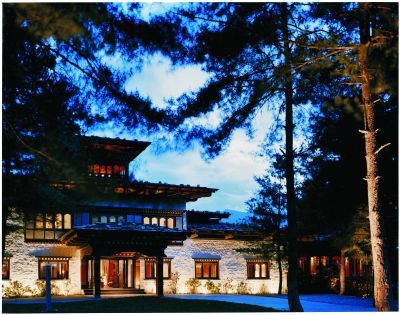Bhutan hoping to see more tourists head for the hills

Your support helps us to tell the story
From reproductive rights to climate change to Big Tech, The Independent is on the ground when the story is developing. Whether it's investigating the financials of Elon Musk's pro-Trump PAC or producing our latest documentary, 'The A Word', which shines a light on the American women fighting for reproductive rights, we know how important it is to parse out the facts from the messaging.
At such a critical moment in US history, we need reporters on the ground. Your donation allows us to keep sending journalists to speak to both sides of the story.
The Independent is trusted by Americans across the entire political spectrum. And unlike many other quality news outlets, we choose not to lock Americans out of our reporting and analysis with paywalls. We believe quality journalism should be available to everyone, paid for by those who can afford it.
Your support makes all the difference.While the Himalayan mountain kingdom of Bhutan has only in recent years really begun to open its doors to the world, the tiny nation nonetheless hasn't escaped unscathed by the downturn in the global tourism industry.
Visitor numbers last year dropped 15 percent, a significant figure even if the total numbers we are talking about are the 23,480 people who visited in 2009 compared to 27,636 in 2008.
Regardless, the Bhutanese government has swung into action in 2010, freeing up the visa process for tourists - they will now be available online from March 1 (via http://www.mfa.gov.bt/) - and announcing it had earmarked a further 100 acres of land for the development of "hotels, spas and wellness centers,'' according to state media.
Bhutan's national carrier - Druk Air (www.drukair.com.bt) - has also this year announced the purchase of its third aircraft and is currently in negotiations to expand its direct-flight services to more major Asian cities.
The government is also looking at ways to phase out the current tariff imposed on tourists, which means that they have to spend US$200 (€147) per day while visiting the country.
Combined, it is hoped these efforts will return Bhutan's annual rise in tourism numbers to the 35 percent growth the country was averaging annually in the six years going in to the world's recent financial strife.
Good news for those already on the ground in the country.
"What Bhutan has is unique in the world,'' explained Jean-Paul Riby, general manager of the Uma Paro resort (www.como.bz) which has been operating in Bhutan since 2004.
"It is being very careful about how its tourism industry is being developed and how it is protecting the culture that makes the country so wonderful.''
Riby says the plan is to boost incoming tourist numbers to 100,000 annually within four years and that Asian transit hubs such as Hong Kong and Singapore are being mooted for direct flights into the country's airport at Paro, with the Hong Kong flights expected to begin by the end of this year.
He says while the tourism industry in the nation with a population approaching 700,000 people is being developed, so is the notion of what visitors to Bhutan want from their experience.
"Before the financial crisis, we were mainly getting North Americans and Europeans into our resort," Riby told Relaxnews. "And they would come to the resort to completely rest and not go anywhere else. Now we are getting more and more Asian visitors and they tend to like to see as much of the country as they can, to get out and tour.''
Bhutan, fast facts:
Opened to tourism: 1974
Area: 38,394 square kilometers
Population: 634,982 (2005 census)
Religion Buddhism
MS
Join our commenting forum
Join thought-provoking conversations, follow other Independent readers and see their replies
Comments